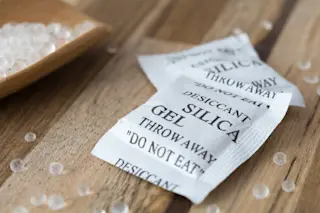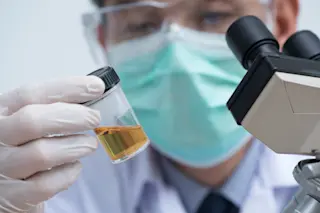Within shoeboxes, beef jerky bags and TV bubble wrap, lie tiny white packets stamped with a very clear "DO NOT EAT" warning. These are silica gel packets, a solution for people everywhere looking to keep their products at perfect humidity levels.
The packets hold up to 40 percent of their weight in moisture, thanks to the accommodating chemical structure of the silicon dioxide molecules inside. And though the packets might be the way we interact with silica gel the most, the material sneaks its way into a range of products you might never see, let alone have delivered to your doorstep.
Technically, silica gel packets are desiccants — the broader category of materials that suck up moisture. Bentonite clay, which comes from volcanic ash, and other chemical formulas, like calcium chloride, also end up in similar places as silica gel packets, for the same purpose: to keep water away from ...














